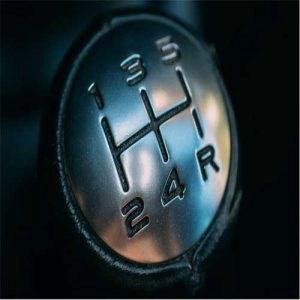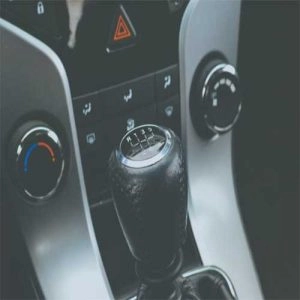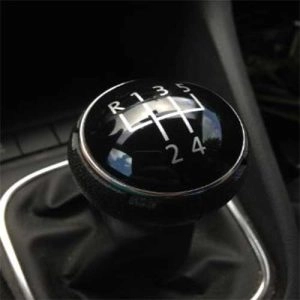The transmission is one of the most important parts of a car, and it is used continuously while driving. We know that there are two types of transmissions, manual and automatic. In this article, we are discussing the manual transmission. Several factors can cause problems in the manual transmission, such as misuse, exceeding the number of kilometers traveled, and neglecting necessary maintenance. The manual transmission consists of several components such as the gearbox, clutch plate, and synchromesh.
The causes of problems encountered with a standard transmission can vary. Some may originate from the standard transmission itself, while others may stem from its other components. Therefore, it is necessary for you to gather specific information about the problem you are experiencing in order to diagnose the situation correctly.
For example, you can search for detailed information indicating whether the problem appears in a particular gear, or when turning, or at a specific speed, or when switching to a lower gear. Determine whether you only feel vibrations, or hear strange sounds such as grinding and clattering. All these details will help you pinpoint the source of the issue and how to fix it with minimal damage.
In this article, we will explain the components of the standard transmission, and highlight the signs and symbols that indicate its damage. Stay with us.
Components of the Manual Transmission

The standard transmission consists of 6 main parts:
Firstly, the clutch pedal:Also known as the clutch pedal, it is a separate gear that can be controlled through the hydraulic components. If you press this pedal with your foot, the clutch plate will be released.
Secondly, the clutch plate:It consists of a disc that contains a high friction material around the circumference. This material aids in transferring the torque from the car's engine to the manual transmission system.
Thirdly, alignment:These are parts that are attached to the crankshaft and rotate with it. It is worth noting that the clutch plate is located between the crankshaft and the flywheel, but it is not actually connected to either of them.
These components work together to enable the car to move at various speeds and terrains. The clutch pedal, clutch disc, and gearbox are the essential components that control gear shifting and transmission.
Also read:Where is the idle sensor located and how to repair it when it fails?
Fourthly: Clutch Pad:The clutch disc plays an important role in temporarily separating the engine from the standard transmission during gear engagement. When the clutch pedal is pressed, the clutch disc locks onto the flywheel, which in turn pushes the clutch release fingers inwards. This action separates the engine from the transmission, allowing you to change gears and shift to a different gear. When the clutch pedal is released, the clutch disc returns to its original position, allowing the transmission of power from the engine to the transmission again.
Fifth: Manual Transmission Clutch Replacement:It is a rotatable, toothed disk, commonly made from cast iron, heavy steel, aluminum, or carbon fibers. The flywheel resides between the gearbox bell housing and the engine, connecting with the crankshaft at its end. It works in conjunction with the clutch, pressure plate, and release bearing to transfer power from the vehicle's engine to the manual transmission. The outer circumference of the flywheel contains several cogged gears that are used to start the engine through the car's starter motor.
Sixth: Regular Gearbox Gears:Gears of varying sizes are used for driving at different speeds. Smaller gears with fewer teeth provide less torque, but they enable the driver to drive at higher speeds. Meanwhile, larger gears provide more torque, but their maximum speeds are lower.
What are the signs of manual transmission damage?

Here are five famous indicators pointing towards a malfunction in the manual transmission:
Firstly: The appearance of unfamiliar sounds from the transmission:
The main reason for the noise and loud sounds emanating from the transmission could be a lack of transmission fluid. A deficiency or contamination of the fluid can lead to the gears operating unevenly and producing high-pitched noises, making the transmission bothersome. Moreover, damaged gears and some other components can occasionally produce loud noises and chaos. To verify that the sound is not due to external factors and that it originates from the transmission during deceleration and acceleration, other components such as the CV joints, differential, and driveshaft can be checked.
Secondly: The emergence of grinding noises from the transmission:
If you hear grinding noises when trying to start the engine or engage the gearbox, it may indicate wear in the gear teeth. This can occur in various gears such as the camshaft gears or the gearbox gears.
Thirdly: The manual transmission shifts into idle mode.
Usually, the reason behind a manual gearbox shifting into neutral is due to a problem with the link connecting the gear stick and the transmission. If this link is corroded or excessively stretched, the transmission will not be able to change gears correctly, and it will not be able to remain engaged in the required gears.
If the manual transmission in your car shifts to neutral only when switching to a specific gear, the problem might be due to the wear of the synchronizers. Synchronizers act as integral part of a manual transmission, and their primary purpose is to facilitate the shifting between the gears. When synchronizers are damaged, the gears cannot engage as needed, and the transmission might unexpectedly shift to neutral.

Fourthly: You may find it hard to change the gearbox gears.
If you encounter difficulty in shifting gears, even when the car engine is not running, it is recommended to check the connections. If the problem persists and only appears when the engine is running, it is advised to ensure the clutch plate is in good condition. Also, you should check the clutch cylinder and make sure there is no air within the system, depending on the car model. Other causes that may lead to difficulty in gear shifting can include damage to the internal components, especially the flywheel, gear sleeve, and clutch plate, or a lack of transmission oil.
Fifthly: The transmission can get stuck in a particular gear.
In some cases, the driver may not be able to remove the stick.The Manual TransmissionThis can be attributed to a low oil level or the use of an inappropriate type of oil. It could also be related to the clutch cable, if it is not properly extended. In this case, it is advisable to steadily and slowly pull up the clutch pedal. It's worth mentioning that the cable can be significantly damaged due to rust, excessive use, or dirt, and must therefore be replaced.

Comments